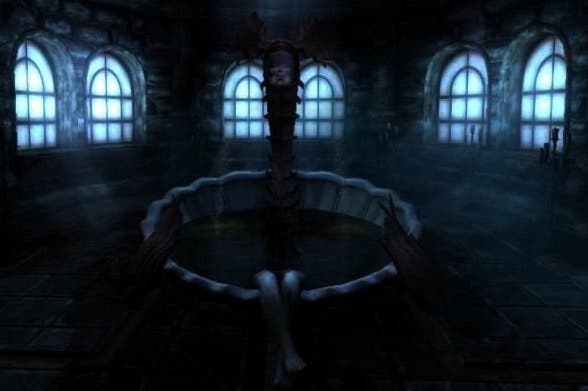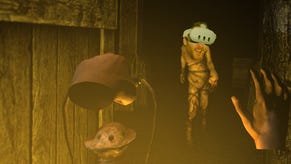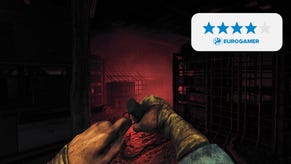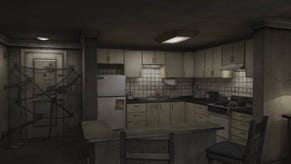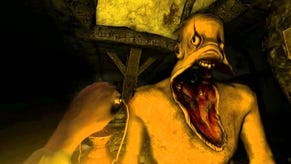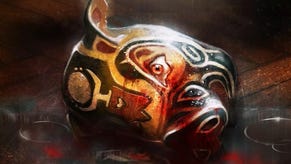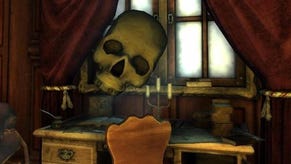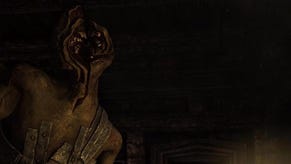The monstrous evolution of Amnesia: The Dark Descent
Unforgettable.
There's a reasonable argument to be made that Amnesia: The Dark Descent is one of the most influential games of this decade. Like Minecraft and Dark Souls, the ideas and systems explored in Frictional's masterclass in terror have crept out into other areas of the games industry, like a virus seeking out fresh hosts.
Prior to Amnesia, horror games tended to be prefixed with the term "Survival", and the genre was exemplified by games like Resident Evil and Dead Space, where jump-scares and creepy environments coexisted alongside an emphasis on combat and the scavenging of supplies. Even the most frightening games in existence, like Silent Hill and System Shock 2, couldn't let go of that notion of fighting back against some kind of external threat.
This is the notion that Amnesia challenged by shifting the focus away from fighting monsters, and towards the central character's own state of being instead. The result dramatically altered the horror genre as a whole, but Amnesia didn't break this new ground entirely on its own. Instead, it represents the culmination of a series of ideas that evolved gradually throughout Fractional's earlier output, beginning with the studio's debut, Penumbra: Overture.
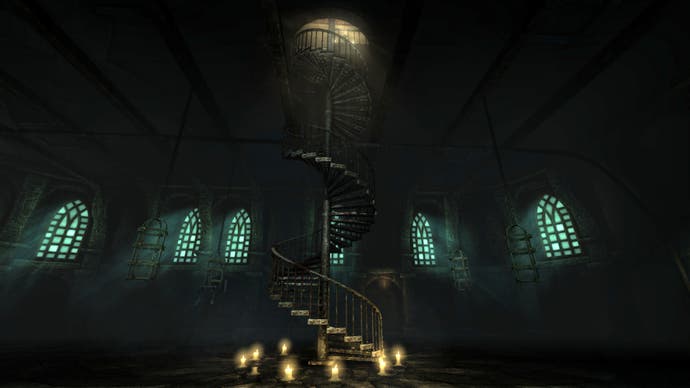
In Penumbra, the player character Phillip explores an abandoned Arctic research station after receiving a letter from his allegedly deceased father. As you explore the mining complex just outside the facility itself, Frictional's pioneering physics-based interactions are introduced. Doors and drawers are opened and closed by holding down the mouse button and dragging the mouse around, for example, rather than merely clicking on them. While this sort of interaction is, for the most part used to solve puzzles, its significance lies in the way it lends a strong connection with the world that surrounds you - a vital component of any horror game.
Overture features a combat system, but it's slow and clumsy while enemies are tough and dangerous. Vulnerable though you are, you're guided through the mining complex by the warm, friendly voice of Red, who communicates with you over loudspeaker from an unknown location. At the end of the game though, the player is left with no choice but to incinerate Red in order to obtain a key to escape the complex. It's an absolutely agonising decision, and the game pulls no punches in showing you the consequences of your actions.
The grains of Amnesia, then, are already visible - the tactile interaction, the emphasis on avoiding combat, and the desire to present the player with horror that is not just extrinsic, but intrinsic too. Combat was removed entirely in Black Plague, Penumbra's brilliant second chapter, and it's difficult to emphasise how brave and ingenious a decision that was, given how reliant all first-person games and most horror games up to that point were on letting the player clutch a weapon to their virtual chest. Without that crutch you feel naked and vulnerable, no longer in control of the situation, and there are few feelings as frightening as the absence of control.
Yet Black Plague's greatest trick is a narrative one that manifests itself in the form of Clarence. Clarence begins the game as a figment of the player's psyche, a voice in the player's head that drones, sneers and jokes in a thick New York accent. As Black Plague progresses, Clarence's personality develops, and his power over the player increases to the point where he can manipulate your perception of the environments. Again, the horror is not just about what's prowling up and down the next corridor, but what's going on inside your character's body and mind. These and other concepts, evolved in earlier games, would be used to disrupt horror conventions in Amnesia.
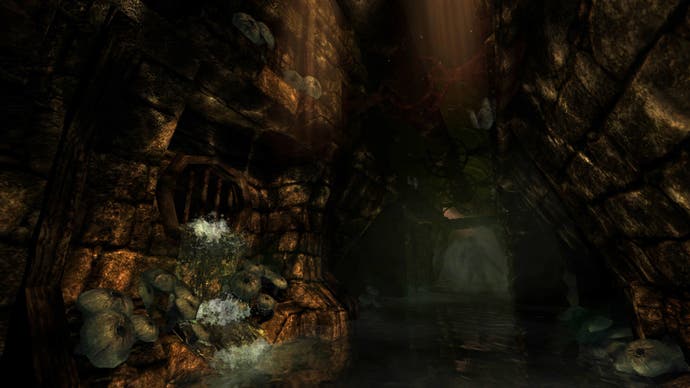
Yet for all of these revolutionary concepts, Amnesia's setting couldn't be more traditional by contrast: a decaying gothic castle situated in rural nineteenth-century Prussia. The wind whirls and howls through its dark and draughty corridors, the tapestries are thick with dust, and the doors creak like old bones when they're prised open. It's every horror film's haunted house, in other words, and the premise itself is equally hackneyed. Your character, Daniel, has lost his memory and spends most of the game gradually piecing together his past, motivated by a single directive from his previous self: find and kill Alexander Brennenberg, the owner of the castle.
His adventure reveals some ugly truths about his past life, but the true extent to which the corruption spreads revitalises the tired concept of the amnesiac protagonist. During an archaeological excavation in Egypt, Daniel had become the victim of a curse. Having travelled to the Castle for aid, Brennenburg convinced him that the only way to lift it was with a substance known as Vitae, extracted from humans through torture. For the sake of his own salvation, Daniel becomes the Castle's torturer, committing atrocious acts against the prisoners locked within the dungeon.
The revelations about Daniel's depravity are stomach-turning, to the point where it becomes difficult to associate his polite demeanour with the actions he has evidently performed. Again, Frictional places the emphasis on internalising the horror, and focuses on the corruption of the person's character, rather than their flesh.
Amnesia explores this internal horror systematically, as well as narratively. Alongside his health bar, Daniel has a sanity meter which decreases whenever he witnesses a disturbing event, arouses the suspicion of a prowling monster, or simply stands in the dark for too long. As his mental state deteriorates, Daniel's vision begins to swim and he starts hallucinating. If it diminishes completely, Daniel suffers a complete collapse, rendering him immobile and vulnerable to attack for a short period of time.
The insanity system runs through Amnesia like a spinal column, and acts as the support structure from which every other mechanic hangs. Darkness becomes a fickle ally, concealing you from monsters while also gnawing at your mind. Every second you spend watching patrolling monsters is both necessary and debilitating. Daniel's heavy breathing and gibbering in turn attracts even more attention, and brings him one step closer to a paralysing breakdown.
Frictional is well aware that the player's worst fears lie within their own imagination, and so the designers do their utmost to avoid revealing too much. Instead, darkness, visual distortion and exquisite sound design are used to feed your mind with just enough material for it to construct its own Frankenstein's monster. The most striking example of this occurs during the infamous water monster sequence, where you're hunted through a flooded underground passage by the sound of nothing more than a splash. That's all it is, but because of the environmental design and the oppressive atmosphere, your mind instantly conjures a freakish combination of teeth and limbs concealed behind some camouflaging magic.
This focus on frightening the player every which way also leads to some amusing idiosyncrasies, however. Despite the game's emphasis on manipulating objects in order to solve puzzles, you can't carry some clearly portable and helpful light-sources with you. Elements of the script and Amnesia's voice-acting have not aged well either, particularly when held up against the light of the studio's most recent game, SOMA. Nevertheless, Amnesia remains a masterpiece, and its impact cannot be underestimated.
Amnesia didn't just spawn a whole new sub-genre of first-person horror games, fragments of its design extend even to games like Gone Home, prototyped initially on Frictional's HPL engine, or Dear Esther, whose creators were eventually hired to create Amnesia's sequel. The Dark Descent may be half a decade old now, but like any good horror monster, it's going to keep coming back for years to come.
